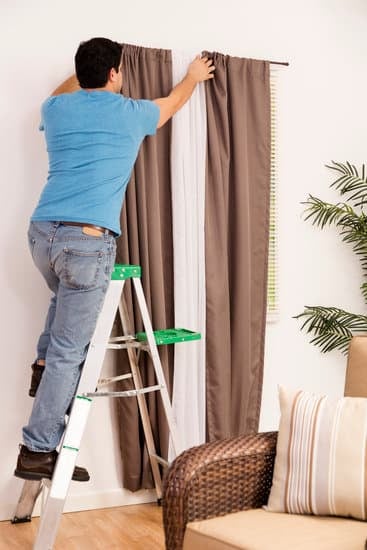When it comes to home improvements, many homeowners wonder if they can benefit from tax write-offs. Understanding the basics of tax write-offs for home improvements is crucial for reducing tax liabilities and maximizing potential savings. In this article, we will explore various types of home improvements that may qualify for tax deductions, including energy-efficient upgrades, accessibility modifications, and more.
We will also discuss specific tax incentives and credits available for energy-efficient home improvements, as well as deductions associated with medical necessity and home office improvements. Additionally, we will provide guidance on documentation and procedures for claiming home improvement tax write-offs, common mistakes to avoid during the process, and the advantages of consulting with a tax professional.
Home renovations can often be significant investments, so it’s essential to explore any potential avenues for saving money. Tax write-offs are one such avenue that homeowners should not overlook. A tax write-off refers to a deduction or credit that reduces an individual’s taxable income or total amount owed in taxes. By taking advantage of eligible write-offs, homeowners can significantly decrease their overall tax liabilities.
When it comes to home improvements specifically, there are several types that may qualify for tax deductions. Energy-efficient upgrades are increasingly popular due to their positive impact on both the environment and homeowner expenses. These include installation of solar panels, energy-efficient windows and doors, insulation upgrades, and more. Additionally, certain accessibility modifications made to accommodate individuals with disabilities may also be eligible for deductions.
To take advantage of these deductions effectively, it is important to understand the criteria set by the government regarding qualifying improvements. This includes guidelines related to costs incurred and specific requirements that must be met in terms of materials used or installation methods applied.
Home Improvements that Qualify for Tax Write-Offs
Energy-Efficient Upgrades
One type of home improvement that may qualify for tax write-offs is energy-efficient upgrades. These upgrades are aimed at reducing the energy consumption of a home and can include things like installing solar panels, upgrading insulation, or replacing windows and doors with more energy-efficient options. The government often provides specific tax incentives and credits for these types of improvements as a way to encourage homeowners to make their homes more environmentally friendly.
To qualify for the tax write-off, homeowners must meet certain criteria and guidelines set by the government. For example, the improvements must be made to a primary residence or a second home that is not used for rental purposes. Additionally, the upgrades must meet certain energy-efficiency standards established by the government. It’s important for homeowners considering energy-efficient upgrades to research and understand these guidelines before making any improvements in order to ensure eligibility for tax deductions.
Accessibility Modifications
Another category of home improvements that may qualify for tax write-offs is accessibility modifications. These modifications are made to accommodate individuals with disabilities or mobility issues within the household. Examples of accessibility modifications include installing wheelchair ramps, widening doorways, or adding handrails in bathrooms.
In order to claim tax deductions for these types of improvements, homeowners must have written certification from a doctor stating that the modifications were necessary for medical reasons. Additionally, expenses related to accessibility modifications can only be deducted if they exceed 10% of the homeowner’s adjusted gross income (AGI). Homeowners should consult with a tax professional or refer to IRS guidelines regarding deductible medical expenses to understand the specific requirements associated with claiming tax write-offs for accessibility modifications.
Other Qualifying Home Improvements
Aside from energy-efficient upgrades and accessibility modifications, there are other types of home improvements that may be eligible for tax deductions. These can include renovations or additions that improve the value of the property such as adding a deck, finishing a basement, or remodeling a kitchen.
However, it’s important to note that not all home improvements will qualify for tax write-offs. General maintenance or repairs typically do not qualify unless they are necessary due to a casualty event such as damage from a storm or fire.
When considering claiming tax deductions for home improvements, homeowners should keep detailed records and receipts of all expenses related to the improvements. This documentation is essential when filing taxes and can help support the eligibility and value of the claimed deductions. Additionally, consulting with a tax professional can provide valuable guidance on which home improvements may be eligible for tax write-offs and how to properly document these expenses for maximum benefits.
Tax Breaks for Energy-Efficient Home Improvements
One of the most significant tax breaks available for home improvements is specifically related to energy efficiency. The government offers a range of incentives and credits to encourage homeowners to make environmentally friendly upgrades. These tax breaks not only help reduce tax liabilities but also contribute to a more sustainable future.
To qualify for these tax breaks, homeowners need to focus on making energy-efficient improvements such as installing solar panels, upgrading insulation, or replacing windows and doors with more energy-efficient options. The amount that can be deducted varies depending on the specific improvement and the current tax laws.
The federal government offers a Residential Renewable Energy Tax Credit, which allows homeowners to claim a percentage of their expenses for qualified energy-efficiency improvements. For example, solar panel installation is eligible for a 26% federal tax credit until December 31, 2022, after which it decreases gradually. It’s important to keep in mind that documentation is essential when claiming these tax breaks; homeowners should retain receipts and other relevant documents as proof of expenses.
In addition to federal incentives, many states also offer their own tax credits or rebates for energy-efficient home improvements. Homeowners should research state-specific programs and requirements to maximize their potential savings.
Here are some key points regarding the tax breaks for energy-efficient home improvements:
- Focus on energy-efficient improvements like solar panels, insulation upgrades, or window replacements.
- Research federal programs like the Residential Renewable Energy Tax Credit.
- Retain documentation including receipts and other relevant records.
- Explore state-specific tax credits or rebates.
By taking advantage of these tax breaks, not only can homeowners make their homes more eco-friendly but also significantly reduce their tax burden in the process. It’s advisable to consult with a tax professional who specializes in energy-efficient home improvement deductions to ensure accurate claims and maximum benefit from available tax breaks.
Deductible Home Improvements for Medical Necessity
Many home improvements that are made for medical reasons may qualify for tax deductions. These deductions can help offset the cost of necessary modifications, making it more affordable for individuals and families to create a safe and accessible living environment. It is important to understand the specific conditions and expenses that may qualify as deductible in order to maximize tax benefits.
Examples of medical home improvements that may be eligible for tax write-offs include wheelchair ramps, wider doorways, bathroom modifications, and installation of handrails or grab bars. These types of modifications are typically made to accommodate individuals with disabilities or mobility limitations. Additionally, expenses related to the installation of medical equipment or devices prescribed by a healthcare professional may also be deductible.
To claim these deductions, it is important to have proper documentation and evidence of medical necessity. Keep receipts, invoices, and any supporting documents that prove the need for the home improvements. It is also advisable to obtain a letter from a healthcare professional stating the medical necessity of the modifications. This documentation will serve as evidence in case of an audit or when filing taxes.
It is worth noting that not all medical home improvements are deductible. Cosmetic enhancements or upgrades that do not directly relate to addressing a specific medical condition may not qualify for tax write-offs. Consulting with a tax professional who specializes in handling deductions for medical expenses can provide valuable guidance in determining eligibility and ensuring accurate claims.
Home Office Deductions
Understanding Home Office Deductions
One category of home improvements that may qualify for tax write-offs is improvements made to a home office. Many individuals operate businesses out of their homes, whether full-time or as a side gig, and the Internal Revenue Service (IRS) allows certain deductions for expenses related to a home office. To qualify for these deductions, the home office must be used exclusively and on a regular basis for business purposes.
IRS Guidelines for Home Office Deductions
The IRS provides specific guidelines regarding what types of home office improvements can be counted as tax write-offs. These guidelines aim to ensure that the expenses claimed are directly related to the business use of the office space.
Generally, any improvement that benefits both personal and business purposes cannot be fully deducted; only the portion that is attributable to business use can be claimed. For example, if a homeowner installs new carpeting throughout their entire house but uses it as a deduction for their home office, they can only claim a percentage based on the square footage of the office in relation to the whole house.
Eligible Home Office Improvements
Certain types of home office improvements are generally considered eligible for tax write-offs. Examples include renovations or repairs made specifically to enhance or maintain the functionality and productivity of the home office space.
Some common deductible expenses include painting, flooring improvements, installing built-in shelving or cabinets, adding partition walls, and upgrading lighting fixtures. It’s important to note that only improvements made directly to the dedicated space used as a home office are eligible; general repairs or maintenance done throughout the entire house would not count.
By understanding and taking advantage of these home office deductions, taxpayers can potentially save money on their taxes while improving their work environment at the same time. However, it is essential to consult with a tax professional or refer to IRS guidelines in order to accurately determine which home office improvements qualify for tax write-offs and maximize the potential tax benefits.
Documentation and Procedures for Claiming Home Improvement Tax Write-Offs
When it comes to claiming tax write-offs for home improvements, proper documentation and adherence to specific procedures are crucial. Failing to have the necessary records and following the correct steps can result in denied claims or even audits. This section will guide you on the correct procedures to claim tax deductions for home improvements, emphasize the importance of documentation, and provide tips to simplify the process.
To successfully claim tax write-offs for home improvements, it is essential to keep organized records of all relevant documents. This includes receipts, invoices, contracts, and any other paperwork related to your home improvement projects. These documents serve as evidence that the expenses were incurred and can support your claim if the IRS requests further information or audits your return.
In addition to maintaining proper documentation, it is important to understand the eligibility requirements for claiming home improvement tax write-offs. The IRS has specific guidelines regarding what types of improvements qualify for deductions. For example, energy-efficient upgrades such as solar panels or Energy Star-rated appliances may be eligible for tax credits. Accessibility modifications made for medical reasons may also qualify.
| Document | Description |
|---|---|
| Receipts/Invoices | Proof of expenditures on home improvements |
| Contracts/Agreements | Evidence of hiring professionals or contractors |
| Permits/Approvals | Documentation showing compliance with local regulations |
| Before and After Photos | Visual evidence of completed improvements |
Apart from maintaining proper documentation, it is equally important to follow the correct procedures for claiming home improvement tax write-offs. Start by filling out the appropriate tax forms, such as Form 5695 for energy-efficient improvements or Schedule A if you are itemizing deductions. Make sure to accurately report your eligible expenses and provide all necessary information requested by the IRS.
To simplify the claim process and avoid potential issues, consider consulting with a tax professional who specializes in home improvement tax write-offs. They can guide you through the documentation requirements and help maximize your eligible deductions. Furthermore, a tax expert can ensure that you take advantage of any additional credits or incentives available at the federal, state, or local level.
By understanding and following the proper procedures for claiming home improvement tax write-offs and maintaining accurate documentation, you can optimize your chances of maximizing tax savings while avoiding audits or penalties. Take advantage of the potential benefits that home improvements may offer when it comes to reducing your overall tax liability.
Common Mistakes to Avoid when Claiming Home Improvement Tax Write-Offs
When it comes to claiming home improvement tax write-offs, there are several common mistakes that taxpayers should avoid. Making these errors can not only lead to potentially costly audits and penalties but also result in missed opportunities to maximize tax benefits. By being aware of these mistakes and taking the necessary precautions, individuals can ensure accurate claims and potentially save more money.
One common mistake to avoid is failing to keep proper documentation and records. When claiming home improvement tax write-offs, it is essential to have all the necessary supporting documents, including receipts, invoices, contracts, and any other relevant paperwork. This documentation will serve as proof of expenses incurred and the legitimacy of the claimed deductions. Without proper documentation, taxpayers may face challenges in substantiating their claims if audited by the IRS.
Another mistake to avoid is claiming ineligible expenses as home improvements for tax write-offs. It is crucial to understand which types of home improvements qualify for deductions according to the government’s guidelines.
For example, cosmetic upgrades or repairs that do not add value or improve the functionality of the home typically do not qualify for tax write-offs. Taxpayers should familiarize themselves with the specific criteria set by the IRS or consult a tax professional to ensure they are making accurate claims.
Lastly, another common mistake is overlooking potential state or local tax incentives related to home improvements. In addition to federal deductions and credits, there may be additional tax breaks available at the state or local level. These incentives can vary depending on location and may include property tax exemptions or reduced sales taxes on certain types of home improvements. It is essential for taxpayers to research and take advantage of these opportunities to further optimize their tax savings.
Avoiding these mistakes requires careful planning, attention to detail, and possibly seeking professional advice from a knowledgeable tax professional. By keeping thorough documentation, understanding eligibility requirements, and exploring all available incentives at both federal and local levels, individuals can ensure accurate claims while maximizing their savings on home improvement tax write-offs.
| Mistake | Impact |
|---|---|
| Failing to keep proper documentation and records | Potential challenges in substantiating claims if audited by the IRS |
| Claiming ineligible expenses as home improvements for tax write-offs | No tax benefits received for ineligible expenses |
| Overlooking potential state or local tax incentives related to home improvements | Missed opportunities for further tax savings |
Consult a Tax Professional
Consulting a tax professional can be incredibly beneficial when it comes to optimizing your home improvement tax write-offs. While it is possible to navigate the complexities of tax deductions on your own, working with an expert can ensure that you maximize your tax savings and minimize the risk of errors or audits.
Tax professionals have specialized knowledge and experience in understanding the intricacies of tax laws and regulations. They stay up-to-date with the latest changes and updates, ensuring that they can provide the most accurate advice tailored to your specific situation. By consulting with a tax professional, you can gain insight into potential deductions you may not have been aware of, maximizing the benefits you receive from your home improvement projects.
When choosing a tax professional, it’s important to find someone who is reputable and knowledgeable. Look for professionals who are qualified certified public accountants (CPAs) or enrolled agents (EAs). These individuals have gone through rigorous training and examinations to earn their credentials, demonstrating their expertise in taxation matters.
During your consultation with a tax professional, be prepared to provide documentation related to your home improvements such as receipts, contracts, and any other relevant records. This will help them accurately assess what deductions you qualify for and ensure that all eligible expenses are properly accounted for.
Conclusion
In conclusion, understanding and maximizing home improvement tax write-offs can provide significant tax savings for homeowners. By taking advantage of the various deductions and incentives available, individuals can reduce their tax liabilities while also making necessary improvements to their homes.
Throughout this article, we have discussed the different types of home improvements that may qualify for tax write-offs, such as energy-efficient upgrades, accessibility modifications, and home office improvements. We have also highlighted the specific criteria and guidelines set by the government for qualifying these improvements.
Furthermore, we have explored the documentation and procedures required to claim these tax deductions properly. Proper record-keeping and consulting with a tax professional were emphasized to simplify the claim process and avoid potential issues.
It is important for homeowners to recognize the potential tax benefits of their own home improvement projects. By conducting research, gathering proper documentation, and seeking expert advice when needed, individuals can optimize their tax savings while improving their homes. We encourage readers to explore the specific tax incentives and credits available in their area and consult with a knowledgeable tax professional for personalized guidance.
Frequently Asked Questions
How much of home improvement is tax deductible?
The deductibility of home improvement expenses depends on the nature and purpose of the improvements made. Generally, home improvement costs are not directly tax deductible in their entirety. However, there are certain situations where specific portions of home improvement expenses can be deducted or used to reduce your taxable income.
For instance, if you use a portion of your home exclusively for business purposes, you may be able to claim a deduction for the expenses related to that part of your home. Additionally, if your improvements qualify as medical expenses or meet certain energy-efficiency requirements, you might be eligible for deductions or credits. It’s essential to consult with a tax professional or refer to the IRS guidelines for accurate information on what portion, if any, of your home improvement expenses may be tax deductible.
What are the tax breaks for home improvements in 2023?
As it is currently 2021, I cannot provide specific information on tax breaks for home improvements in 2023 because these are subject to change based on evolving tax laws and regulations. Tax breaks and incentives for home improvements typically undergo revisions from year to year in response to government policies and economic conditions.
Therefore, it is crucial to stay updated with the latest tax laws by consulting a qualified tax professional or referring to official IRS publications as 2023 approaches. They will have the most accurate and current information regarding any available tax breaks or deductions for home improvements at that time.
Can you write off new flooring on your taxes?
In most cases, new flooring would not be directly eligible for a deduction on your taxes unless it fulfills certain criteria that can make it eligible under various circumstances. If you use a portion of your home strictly for business purposes and decide to replace the flooring within that designated area – say, an office space or workshop – then you may potentially qualify for a deduction for those specific costs associated with improving that part of your property.
However, personal use flooring renovations generally do not qualify as deductible expenses since they enhance the general comfort or aesthetics of one’s living environment rather than serving a distinct tax-deductible purpose. It is always best to consult a tax professional or refer to the IRS guidelines for comprehensive and up-to-date information on what expenses may be eligible for deductions.

I’m thrilled to have you here as a part of the Remodeling Top community. This is where my journey as an architect and remodeling enthusiast intersects with your passion for transforming houses into dream homes.





